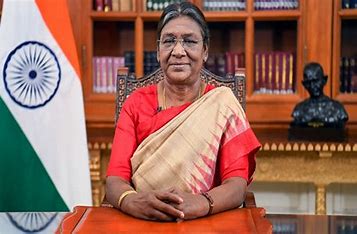
The new education policy is set to define a brighter and more hopeful future for the country’s students and educators.
On July 29, 2020, the Union Cabinet approved the National Education Policy (NEP), which calls for significant adjustments to both secondary and post-secondary education. An examination of the key lessons learned and their consequences for learners and educational institutions.
What purpose does an NEP serve?
NEP is a thorough framework that directs the nation’s educational advancement. The Congress MP Siddheshwar Prasad’s criticism of the government at the time for lacking an educational vision and philosophy in 1964 was the first indication that a policy was needed. In order to create a coordinated national education policy, a 17-member Education Commission led by DS Kothari, the UGC chairperson at the time, was established in the same year. In 1968, the first education policy was established by Parliament based on recommendations made by this Commission.
Usually, a new NEP is introduced every several decades. As of now, India has had three. The first was implemented under Indira Gandhi in 1968, and the second under Rajiv Gandhi in 1986. The NEP of 1986 was updated in 1992, during the tenure of Prime Minister PV Narasimha Rao. The third is the NEP,2020.
What are the salient features?
The changes proposed by the NEP include the elimination of the M.Phil. program, the creation of a four-year multi-disciplinary undergraduate program with multiple exit options, the dismantling of the UGC and the All-India Council for Technical Education (AICTE), and the opening of Indian higher education to foreign universities.
The main objectives of education in schools are to restructure the curriculum, make Board exams “easier,” reduce the syllabus to only “core essentials,” and emphasize “experiential learning and critical thinking”.
The 1986 policy advocated for a 10+2 structure for school education. The new NEP proposes a “5+3+3+4” design, which corresponds to the age categories of 3-8 years (foundational stage), 8-11 (preparatory), 11-14 (middle), and 14-18 (secondary). This is a considerable shift from the previous policy. This places children from the ages of three to five who receive early childhood education also referred to as pre-school education under the purview of formal education. The midday food program will now include preschoolers. According to the NEP, instruction in pupils mother tongues or regional languages shall be provided until Class 5. The strategy also suggests that by 2040, all colleges and universities should strive to become multi-disciplinary and that single-stream programs should be phased out.
How will these changes be put into practice?
The NEP is not mandatory to be followed; it merely offers general guidance. The suggested reforms can only be carried out in concert by the Union and the State governments because education is a concurrent subject, meaning that legislation pertaining to it can be made by both. This won’t occur right away. The current administration has set a goal of completing the policy’s implementation by 2040. Adequate finance is also essential; a lack of funds crippled the 1968 NEP.
To create implementation plans for every NEP component, the government intends to form topic-specific committees of representatives from pertinent state and federal ministries. The plans will outline the steps that various entities, such as the National Testing Agency, state education departments, school boards, NCERT, HRD Ministry, and Central Advisory Board of Education, will need to follow. After planning, a yearly collaborative evaluation of progress made toward predetermined goals will take place.
What does it mean for English-medium schools to emphasize mother tongues or regional languages?
This kind of emphasis is not new; the majority of the nation’s government schools already implement it. It seems unlikely that private schools will be asked to switch to a different language of instruction. A top ministry official explained that states were not required to use mother tongue as the primary language of education. “The subject of education is concurrent.” That’s why, according to the policy, children would be taught in their mother tongue or a local language “wherever possible,” the officer explained.
What about those with flexible work schedules or kids whose parents speak multiple languages?
While the NEP makes no mention of children whose parents have jobs that can be transferred, it does recognize the existence of multilingual households and states that teachers should “use a bilingual approach, including bilingual teaching-learning materials, with those students whose home language may be different from the medium of instruction.
How does the government plan to open up higher education to foreign players?
Universities ranked in the top 100 worldwide would be permitted to establish campuses in India. Though the criteria for defining the top 100 are not specified, the current administration may use the QS World University Rankings, as it has done in the past when choosing which colleges to designate as Institutes of Eminence. All of this, nevertheless, cannot begin unless the HRD Ministry introduces new legislation that specifies the operation of foreign universities in India. It’s unclear whether a new regulation will encourage the top foreign colleges to open campuses in India. The Indian Express revealed in 2013 that the top 20 international universities, including Yale, Cambridge, MIT, Stanford, University of Edinburgh, and Bristol, have expressed no interest in entering the Indian market, at the same time as the UPA-II was attempting to push a similar Bill. At the moment, the only ways that international universities can be involved in India are through faculty exchange programs, cooperative twinning, and online learning. In India, there are about 650 foreign education providers with such agreements.
How will the four-year bachelor’s degree in transdisciplinary studies operate?
It’s significant to note that this proposal was made six years after Delhi University was compelled to discontinue a four-year undergraduate degree at the request of the ruling administration. In the four years that the new NEP proposes, students can graduate with a certificate after the first year, a diploma after the second year, and a bachelor’s degree after the third year.
Students who enroll in four-year bachelor’s programs typically complete some study and gain a greater understanding of the area they choose to major in. Depending on their performance, a B.A. student should be eligible to directly enroll in a research degree program after four years. But master’s degree programs will stay in place, and students can then decide whether to pursue a PhD program, according to physicist and former UGC chairman V S Chauhan.
To summaries, the NEP emerges as a beacon of good change for the Indian education system, ushering in a period of thorough reform and innovation. Its key elements, which include a flexible and comprehensive approach to curriculum creation, an emphasis on skill development, and a focus on harnessing technology, all contribute to a more dynamic and responsive educational ecosystem. The strategy intends to prepare students for the challenges of the twenty-first century by encouraging critical thinking, creativity, and a greater grasp of a wide range of disciplines. Furthermore, the emphasis on comprehensive and egalitarian education, as well as the construction of a strong teacher-training system, demonstrates the dedication to raising a generation capable of driving India’s socioeconomic progress. As we embrace this revolutionary vision, it is clear that the National Education Policy is set to define a brighter and more hopeful future for the country’s students, educators, and, eventually, the whole educational landscape.
Alisha Verma is an Assistant Professor Senior Scale (Law).
Mr Mohit is working as an Assistant Professor of Law at Geeta Institute of Law, Panipat.















